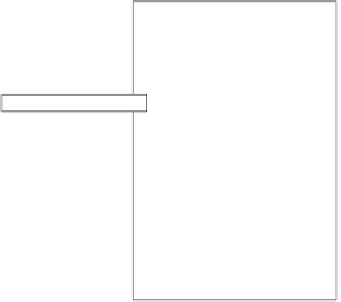Environmental Engineering Reference
In-Depth Information
figure 3.9 Float system for pump motor control.
typical pump control system includes a sensor to determine when the
pump should be turned on or off and the electrical/electronic controls
to actually start and stop the pump. The control systems currently avail-
able for the centrifugal pump range from a very simple on/off float control
to an extremely complex system capable of controlling several pumps in
sequence. In the following sections, we briefly describe the operation of
various types of control devices used with centrifugal pumps.
3.3.7.1 Float Control
Currently, the
float control system
is the simplest of the centrifu-
gal pump controls (see Figure 3.9). In the float control system, the float
rides on the surface of the water in the well, storage tank, or clear well
and is attached to the pump controls by a rod with two collars. One col-
lar activates the pump when the liquid level in the well or tank reaches
a preset level, and a second collar shuts the pump off when the level in
the well reaches a minimum level. This type of control system is simple
to operate and relatively inexpensive to install and maintain. The sys-
tem has several disadvantages; for example, it operates at one discharge
rate, which can result in: (1) extreme variations in the hydraulic loading
on succeeding units, and (2) long periods of not operating due to low
flow periods or maintenance activities.
3.3.7.2 Pneumatic Controls
Pneumatic control systems
(also known as
bubbler tube control
systems
) are relatively simple systems that can be used to control one or
more pumps. The system consists of an air compressor; a tube extend-
ing into the well, clear well, or storage tank or basin; and pressure-
sensitive switches with varying on/off set points and a pressure-relief
valve (see Figure 3.10). The system works on the basic principle of mea-
suring the depth of the water in the well or tank by determining the
































